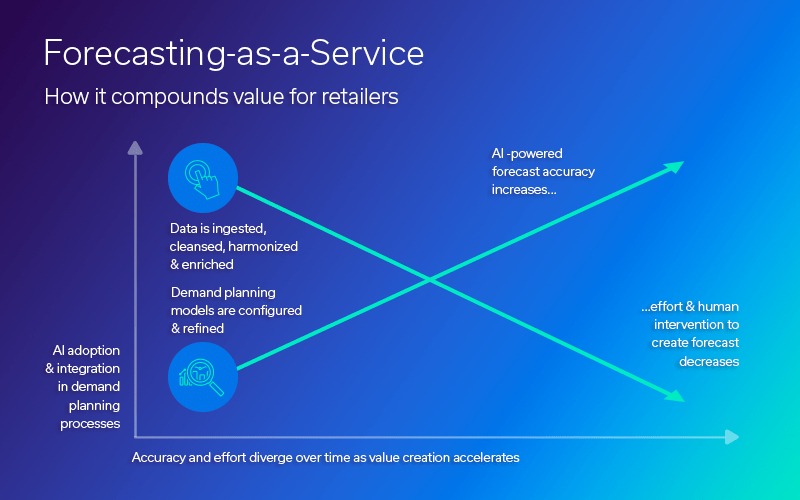The extreme supply chain disruptions of the pandemic years are a thing of the past, but other challenges have filled the void and created new complexities for retailers to manage demand planning. Today’s supply chain challenges are less about emergency response and locating alternate sources of supply and more about coping with volatile shopper behavior, the rapid emergence of new trends, and demand shifts caused by stubbornly high inflation.
Accurately forecasting demand in such an environment would traditionally favor large retailers with bigger IT budgets and more resources to attract highly skilled supply chain professionals, including those adept at tweaking statistical models to improve demand forecasting accuracy. However, since the pandemic faded, some of the advantages inherent in scale have been eliminated. This is especially true with supply chain technology where the availability of new AI-based demand forecasting models are delivering powerful accuracy improvements over traditional statistical models. Moreover, Forecasting-as-a-Service (FaaS) creates a new source of competitive advantage. FaaS levels the playing field by giving retailers of all sizes access to the most advanced AI-based demand planning capabilities.
The democratization of demand forecasting
The FaaS model redefines how demand planning is created and delivered by deploying the familiar SaaS (software-as-a-service) subscription model. Using this approach to demand forecasting, retailers can take advantage of capabilities that otherwise would require a sophisticated, highly AI-skilled internal team. Instead, retailers provide ingested, cleansed, harmonized, and enriched data to their demand forecasting solution provider.
From there, the models are created and the solution is configured. Parameters are tuned and reconfigured as needed, performance is monitored, and retailers can receive daily forecasts across all categories that benefit from the use of AI. Retailers free themselves from the production, maintenance, and model management that requires specialized skills.
The power of compound value creation
The core value proposition of AI-powered demand forecasting is the more it is used, the more accurate and effective the models become. In this respect, FaaS allows retailers to achieve the benefits of compound value creation – similar to compound interest in the finance world. In this manner, retailers accrue operational and financial benefits at an accelerating rate.
For example, while retailers see a decline in time and effort required to produce demand forecasts, there is a corresponding increase in accuracy. This increase yields benefits such as improved on-shelf availability with optimized inventory levels that reduce waste and minimize markdowns to increase profits.

A key reason why retailers can achieve compound value creation with FaaS is that AI-powered solutions are fundamentally different than traditional statistical-based forecasting solutions. For example, an AI-powered forecasting solution is self-learning, meaning the more it is used and the more data and historical information it ingests, the more accurate it becomes and the faster it improves.
This contrasts with statistical-based solutions that are at maximum capacity and accuracy the day they are implemented. In addition to this degradation over time, statistical-based solutions require constant human supervision and intervention on the part of the retailer, which can be very challenging depending on the tenure and sophistication of the supply chain team.
The issue of human capital is a real risk for smaller or mid-sized retailers with lean teams and concentrated expertise. FaaS can mitigate risks associated with the potential loss of talent related to promotions, retirement, or other forms of turnover.
The way forward
Change is hard, especially with evaluating and implementing retail technology. While maintaining the status quo is the easiest option, it is also the least desirable because it exposes retailers to the risk of inaction in a world where AI is powering rapid improvement. This is especially true for growing retailers and those who have plans to grow but need to ensure they have scalable systems to support growth in the out years.
Moreover, AI-based demand forecasting should be a core building block of every successful retail enterprise. Leveraging FaaS helps retailers achieve the ultimate goal of increased forecast accuracy, which produces a wide range of operational benefits leading to increased sales, better margins, reduced inventory, and improved cash flow.

